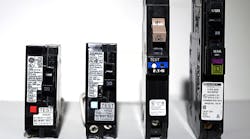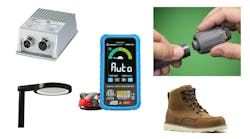Circuit breakers in homes are doing their job reliably, but still, not enough homes have the right ones in place, putting too many at risk from frequently subpar electrical infrastructure.
That’s the big picture that emerges from a survey of electrical contractors on what they’re finding when they go on service calls, specifically with respect to the performance of safety devices, particularly arc-fault circuit interrupters (AFCIs).
The Electrical Safety Foundation (ESFI) and the National Electrical Manufacturers Association (NEMA) asked selected contractors in seven states – Colorado, Georgia, Kentucky, Minnesota, Ohio, Texas, and Washington – what they encountered on breaker issue-related service calls over the span of a year. The results were compiled, and a general picture of circuit breaker performance and overall residential electrical safety emerged.
On a major aim of the survey demonstrating the value of breakers, the findings were encouraging.
“The majority of circuit breaker trips were caused by the device working as intended,” says ESFI spokesperson, Brianne Deerwester. “These trips prevented a serious problem that could have resulted in loss of life or property.”
That finding, she adds, “may help combat negative sentiment about AFCI and GFCI breakers and receptacles.”
Over the years, ESFI and NEMA have led the charge in pushing back on claims in contractor and builder circles that AFCIs are of questionable value.
The survey findings support that pushback, ESFI says. Am enduring critique of AFCIs is that they’re prone to tripping when no danger is present, often a result of appliance incompatibility. The service call records cited in the survey show most AFCIs tripped because a real arc fault condition was detected. NEMA has addressed those concerns in a new paper, asserting that “AFCIs are protecting over 60 million appliances with a very small number of documented reports of unwanted tripping.”
Underlying the survey’s findings, however, are notable concerns about residential electrical safety. First, tripped breakers or fuses accounted for nearly 60% of all service calls, pointing to widespread safety issues, ESFI says. And with AFCI-related calls, all contractors to a man “saw evidence of dangerous arcing.”
And while many contractors saw circuit protection in place, only 37% of calls found the correct type installed. A plurality of tripped breaker incidents – 30% – involved standard circuit breakers; 24% involved fuses; and around 15% each tied to GFCI breakers, AFCI breakers, or dual-function GFCI/AFCI breakers. Other prevalent issues found were overloaded circuits; low-quality, poorly maintained, or inadequate wiring; and insufficient surge protection to protect electronic devices.
Those findings echo ones ESFI found in a May 2022 survey of electrical contractors in Massachusetts, an early adopter of the 2020 National Electrical Code that has entire-home AFCI requirements. That survey of 100 contractors found that 68% of breaker service calls were related to overloads/short circuits. Arc faults accounted for 18%; ground faults 10%; and defective devices 4%. Wiring problems, lack of or inadequate GFCI protection, and electrical overloads were the leading issues found, in that order.
Notably, no contractors mentioned AFCI protection issues. That was amplified in the latest survey’s finding that every contractor found evidence of arcing when investigating AFCI breaker trips. For ESFI, that bolsters the case that AFCIs are valuable and reliable.
“The U.S. Consumer Product Safety Commission (CPSC) estimates that 50% of electrical fires can be prevented with proper AFCI protection, either with AFCI breakers in your electrical panel or with AFCI receptacles,” an ESFI news release on the survey states. “This potential reduction in fires is why the NEC requires the devices in certain areas of the home, like living rooms, bedrooms, closets, kitchens, and laundry areas.”
Tom Zind is an independent analyst and freelance writer based in Lees Summit, Mo. He can be reached at [email protected].



